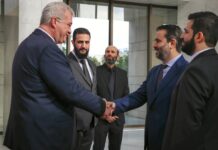
A recent report highlights the American strategy in Syria, which aims to exhaust all conflicting parties, including the Syrian regime, Iran, ISIS, and the factions of the Sunni revolution. However, escalating attacks by Iranian militias against American bases, the failure of the Kurdish-dominated Syrian Democratic Forces (SDF) project, and violations of rules of engagement between Russia and the US have prompted a reconsideration of this strategy. The report reveals a new American project to form a Sunni tribal belt in Syria, followed by an extension into Iraq, with the objective of undermining Iran’s influence and cutting off its land route from Tehran to Beirut.
The American strategy draws from the lessons learned in Iraq, where placing significant support behind the Shiite faction resulted in Iran’s increased influence and the rise of ISIS. To avoid a similar outcome in Syria, the US formed the SDF, which included Arab components alongside the Kurds. However, the dominance of the Kurdish component within the SDF, coupled with grievances from Arab tribes, has led to the need for a parallel Sunni tribal force.
The establishment of the al-Tanf base on the Syrian-Iraqi-Jordanian border triangle serves as a strategic point to counter Iran’s influence in the Syrian desert and launch operations to undermine Russian influence. The new American project aims to create a Sunni Arab tribal force in coordination with the al-Tanf base. The initial objective is to control the Iraqi-Syrian border, starting from Al-Bukamal in Syria’s Deir Ezzor province up to the al-Tanf base.
Several motives and reasons drive this project, including increasing attacks by Iranian militias on American bases, the discovery of an Iranian plan to target US bases in Syria, and enhanced military cooperation between Iran and Russia. Furthermore, the exhaustion of the SDF project and growing Arab tribal resentment towards it have propelled the need for an alternative force.
The primary goal of the project is to sever Iran’s land connection from Tehran to Beirut by controlling the Iraqi-Syrian border. The project also aims to apply pressure on the SDF, which has a pro-Iranian faction, to take action against Iranian militias. Additionally, the project’s long-term objectives involve unifying regions between the Peace Spring and Euphrates Shield operations, weakening SDF control over oil sources, and pushing for a satisfactory solution involving all actors in the conflict.
There are obstacles to the project, including concerns about potential clashes with Russia and the limited number of fighters available. The report recommends engagement by all Syrian actors, particularly the military, direct communication between the al-Tanf base and factions in northern Syria, Turkey’s involvement, and the formation of a tribal force in eastern regions. Financial support for factions pending inclusion in coalition forces at al-Tanf base is also suggested, alongside efforts to attract fighters residing in the southern region.
In conclusion, the American strategy in Syria aims to counter Iran’s influence and expand areas liberated from the Syrian regime, thereby undermining Russian influence and increasing the influence of the revolution. The formation of a Sunni tribal belt could gradually dismantle the SDF system and counter the separatist project while pressuring the regime and Russia to comply with Resolution 2254 and form a transitional governing body.









